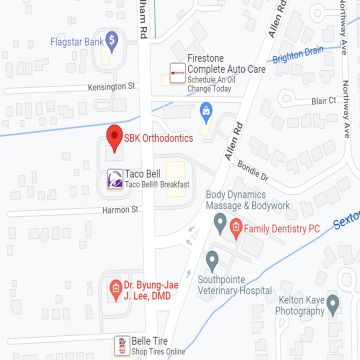Are Braces Better Than Invisalign for Teenagers?

Navigating the world of orthodontic treatment can be a maze of choices, especially when it comes to teenagers. With the rising popularity of clear aligners like Invisalign, parents and teens alike are weighing their options between traditional braces and these modern alternatives. But when it comes down to it, which is the better choice for teenagers? In this article, we delve into the pros and cons of braces vs. Invisalign for teenagers, to help you make an informed decision.
Understanding Braces and Invisalign
Before we can compare the two, let’s break down what each treatment involves.
Traditional Braces
Traditional braces have been around for decades and are the most common method for correcting dental misalignments in teenagers. They consist of metal brackets that are glued to the teeth and connected by wires. Throughout the treatment, an orthodontist adjusts the wires to gradually move the teeth into the desired position.
Invisalign for Teens
Invisalign for teens is a relatively newer treatment that uses a series of clear, plastic aligners to straighten teeth. These aligners are custom-made for each patient and are virtually invisible. Teenagers wear them for at least 22 hours a day, changing to a new set every one to two weeks.
Comparing Braces and Invisalign for Teenagers
When deciding between braces and Invisalign for teenagers, it’s essential to consider various factors such as effectiveness, aesthetics, comfort, and lifestyle impact.
Effectiveness of Treatment
Both braces and Invisalign are effective in treating a wide range of orthodontic issues. However, traditional braces are generally more effective for complex dental problems such as severe overcrowding, vertical tooth movements, and the rotation of canines.
Invisalign, on the other hand, has made significant advancements and can now treat many cases that were once only manageable with braces. Yet, its effectiveness largely depends on the patient’s compliance with wearing the aligners the required amount of time each day.
Aesthetic Considerations
For many teenagers, the aesthetic aspect of orthodontic treatment is a significant concern. Invisalign offers a discreet way to straighten teeth without the noticeable metalwork of traditional braces. This can be a huge confidence booster for self-conscious teens.
Traditional braces, though more visible, have evolved as well. Options like ceramic brackets are less conspicuous than the classic metal brackets and can be a good compromise for those concerned about appearance but needing the robustness of traditional braces.
Comfort and Oral Hygiene
Comfort is another important factor to consider. Invisalign aligners are made from smooth plastic and are generally considered to be more comfortable than braces, which can irritate the cheeks and lips. Additionally, because Invisalign aligners are removable, maintaining good oral hygiene is easier. Teenagers can brush and floss normally without navigating around wires and brackets.
Braces, while less comfortable initially, offer a “set it and forget it” approach since they are not removed throughout treatment. This means there’s no risk of forgetting to wear them, which is sometimes an issue with Invisalign.
Lifestyle Impact
Invisalign aligners must be removed before eating or drinking anything other than water. For teenagers, this can be inconvenient, especially during school hours or social events. Braces, on the other hand, allow for eating without removal, though certain foods must be avoided to prevent damage.
Athletic teenagers may also find Invisalign to be a better option since there’s no risk of injury from broken wires or brackets during sports activities. However, they will need to remember to remove and store the aligners safely during games and practices.
Real Teen Experiences with Braces and Invisalign
Personal experiences can vary significantly, and it’s important to talk to an orthodontist about what might be best for your teenager’s specific case. Here are some anecdotal experiences to consider:
The Social Aspect
For many teens, the social implications of wearing braces can be daunting. Invisalign aligners are often chosen for their near invisibility, which can alleviate some of the anxiety associated with orthodontic treatment.
Discipline and Responsibility
Invisalign treatment requires a level of discipline to ensure that aligners are worn the required amount of time each day. For some teens, this responsibility is manageable, while others may struggle, potentially leading to less effective treatment.
Adaptation Period
Both treatments have an adaptation period. With braces, the adjustment is mostly physical, getting used to the feeling of brackets and wires. For Invisalign, the adjustment is more behavioral, remembering to wear and care for the aligners properly.
The Orthodontist’s Role in Decision Making
An orthodontist’s expertise is crucial in determining the best treatment option for a teenager. They can assess the complexity of the dental issues, predict treatment duration, and provide a professional recommendation based on their experience.
Consideration of Dental Maturity
A teenager’s dental development stage can influence the choice between braces and Invisalign. Some teenagers may not have all their permanent teeth, which could affect the suitability of Invisalign treatment.
Monitoring Progress
Regardless of the chosen treatment, regular check-ups with the orthodontist are necessary to monitor progress and make adjustments as needed. With Invisalign, there’s an added layer of ensuring that the teen is compliant with wearing the aligners as directed.
Cost and Insurance Coverage
The cost is often a deciding factor for families considering orthodontic treatment. In general, Invisalign can be more expensive than traditional braces. However, prices have become more competitive as the technology has become more widespread.
Insurance coverage varies, so it’s important to check with your provider to see what treatments are included in your plan and what your out-of-pocket costs will be.
The Goal is The Same
There is no one-size-fits-all answer when it comes to choosing between braces and Invisalign for teenagers. Each has its own set of advantages and potential drawbacks. The decision should be made after a thorough consultation with an orthodontist, taking into account the teenager’s dental needs, lifestyle, and preferences.
By understanding the key differences and considering the personal implications of each treatment, parents and teenagers can make a choice that leads to a successful outcome and a beautiful, confident smile.
Ultimately, whether you choose traditional braces or Invisalign for your teenager, the goal is the same: to achieve a healthy, aligned smile that provides a foundation for oral health and self-confidence for years to come.








